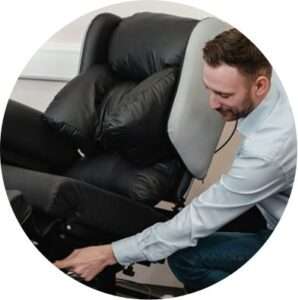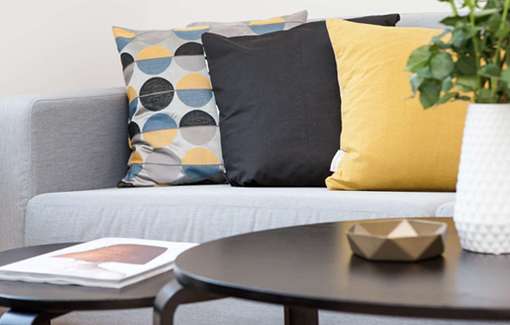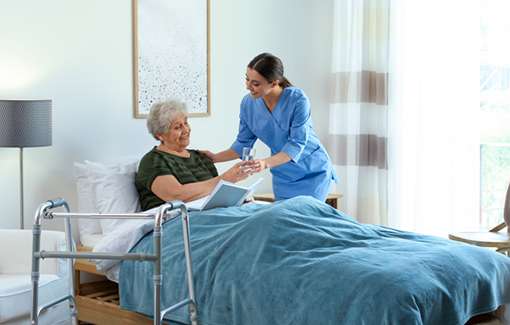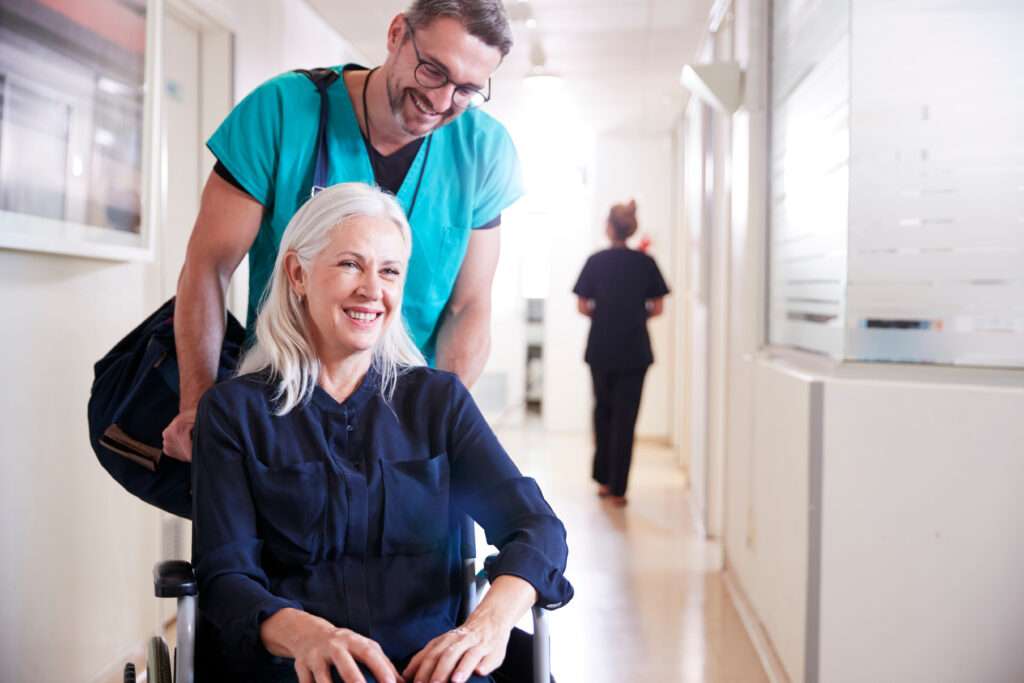Living with Chiari malformation brings a range of challenges, many of which affect how comfortably a person can sit, work, rest, or sleep. Because symptoms like headaches, neck pain, dizziness, and muscle weakness can be aggravated by poor posture, choosing the right seating can be an important part of managing daily symptoms.
This blog explores the best seating options for people with Chiari malformation, and explains how specific seating features can reduce strain on the neck and spine.
Jump straight to…
What is Chiari Malformation?
Chiari malformation is a structural condition where part of the brain, the cerebellar tonsils, descend downward through the opening at the base of the skull (the foramen magnum). This can place pressure on the brainstem and spinal cord, disrupt cerebrospinal fluid (CSF) flow, and cause symptoms such as:
- Headaches (often worsened by coughing, bending, or straining)
- Neck pain
- Dizziness or balance issues
- Numbness/tingling
- Muscle weakness
- Swallowing problems
- Sleep problems
Additional issues such as hearing loss, visual changes, nausea, and depression may also affect daily comfort.
The severity and symptoms can vary widely depending on the type of Chiari malformation.
Different Types of Chiari Malformation
Type 1 (mostly congenital) – the cerebellar tonsils extend below the foramen magnum, usually because of a small posterior fossa. Can be acquired after birth, caused by hydrocephalus (build-up of fluid in brain) or a tumour
Type 2 – (congenital and more serious) – the cerebellar tonsils and the medulla extend below the foramen magnum. Associated with spina bifida.
Type 3 and 4 – much more serious and associated with spina bifida and development abnormalities of the brain and spine.
Some Associated Conditions
- Hydrocephalus – build up of fluid in the brain, as mentioned above
- Curvature of spine – kyphosis or scoliosis, more common with Type 2 Chiari
- Spina bifida – congenital defect where the spinal column hasn’t closed properly
- EDS – weaker and stretchy tissues which can cause joint hypermobility. The relationship between this and Chiari isn’t clear, but it can cause more severe symptoms with headaches and neck pain if the muscles in neck aren’t properly supported.
Book a Free Seating Assessment
Seating Features to Look For With Chiari Malformation
Good posture is important for this condition and to reduce unnecessary pressure on the joints and ligaments in the spine.
Below are the essential features to look for in specialist seating, as well as ways that our chairs can help provide proper support.
Strong Neck and Upper-Back Support
People with Chiari often experience neck instability or muscle weakness, so upper-body support is crucial. Look for a high-backed design, adjustable headrests and firm, contoured lumbar support.
The multi-adjustable head support is a great accessory that can be fitted to the back of our Lento chairs, and can be tailored to each individual user to provide all-round head and neck support.

Multi-adjustable head support
Ergonomic Office Chairs
For those spending time at a desk, an ergonomic office chair can significantly reduce symptom flare-ups.
Supportive features with ergonomic chairs such as the VELA range include:
- Adjustable seat height
- Adjustable armrests
- Natural lumbar curvature
- Easy tilt control
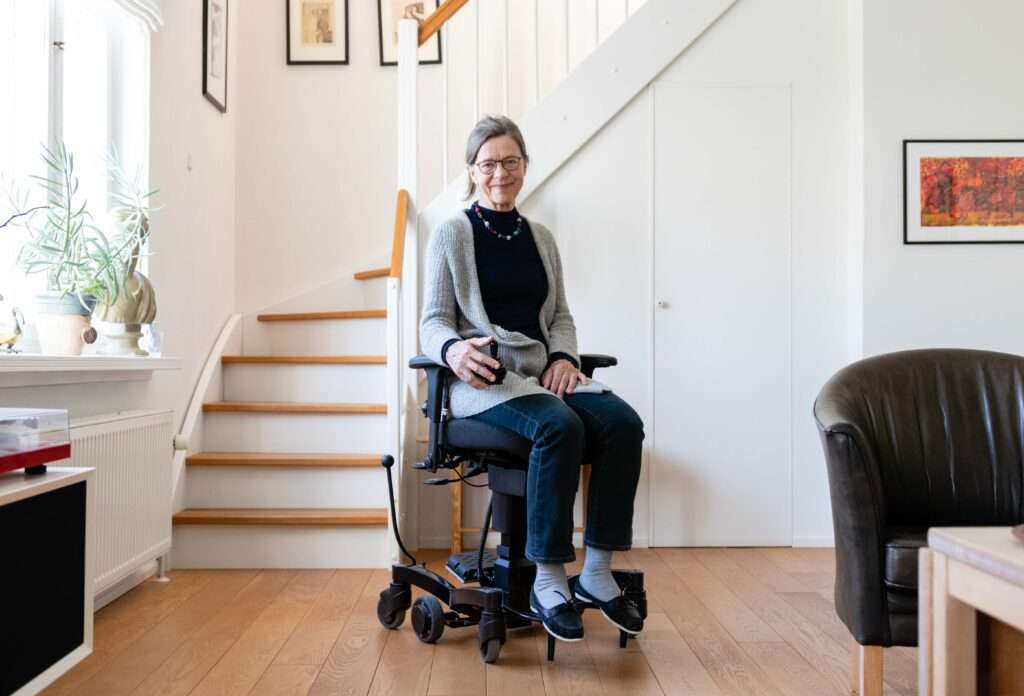
Things to Avoid with Chiari Malformation
Try to keep your back and neck straight and avoid slouching forwards. Prolonged forward head posture may cause pressure or headaches.
Keep the back and neck straight using the right backrest and neck support, to avoid the head drifting forward.
Avoid a slouching posture, which can be rectified by specifying tilt-in-space and the right seat depth and lumbar support.

Seating Solutions for Chiari Malformation
Here are some chairs that are well-suited for someone with Chiari malformation, because of their adjustability, postural support, and design features.
Lento Care Chair
The Lento Care Chair is extremely adaptable. It supports tilt-in-space, backrest recline, and leg-rest elevation.
Key Features:
- It has adjustable seat width, depth, and arm height, meaning it can be tailored to the person’s body shape and postural needs.
- The Lento allows removable cushions and headrests, which is useful to provide firm or soft support depending on comfort.
- The tilt-in-space function enables gentle recline without shifting the pelvis too much, helping pressure redistribution and avoiding excessive neck flexion.
Nidderdale Rise & Recline Chair
A homely rise-and-recline chair from that offers single or dual-motor operation, allowing independent control of backrest and footrest.

Nidderdale Armchair with scroll armrests
Key Features:
- Includes tilt-in-space options, meaning the seat can tilt back while maintaining the same seat-to-back angle, reducing shear forces and helping with postural support.
- Has a double waterfall lateral backrest to provide strong lateral (side-to-side) support, which can help stabilise the neck and upper back.
- Optional extras include pressure-relief cushions, battery backup, and heat/massage pads.
- This chair is beneficial because the rise function helps users stand up gently, reducing strain on the neck.
Comfort Riser Recline Chair
Designed for affordability in care settings, the Comfort Riser Recliner offers single or dual motor tilt-in-space.
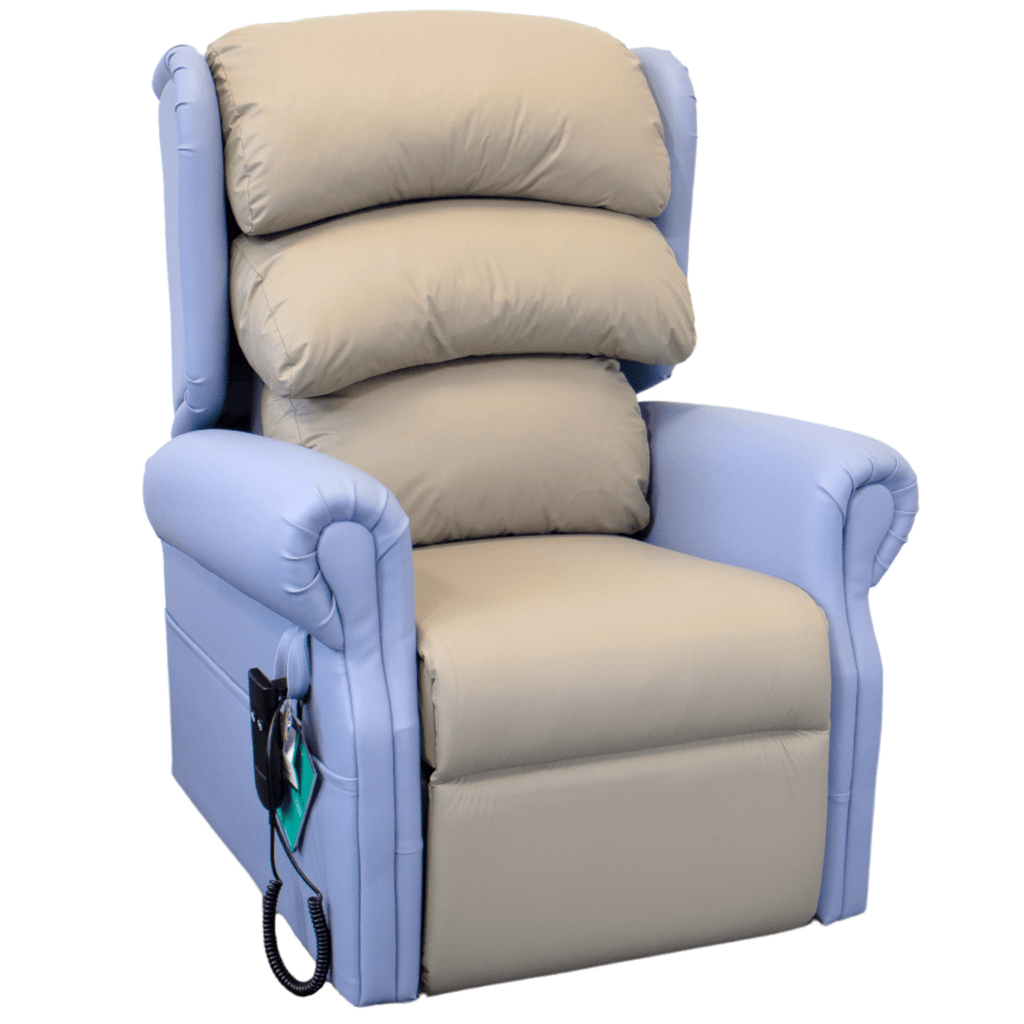
Key Features:
- Compatible with stand aids (e.g., Stand Assist), making it easier to transfer safely
- Built with Dartex upholstery (durable, easy to clean) and designed for infection control environments.
- Good for Chiari patients who may need a supportive chair in a shared care environment or where hygiene is a priority.
VELA Tango Chair
A customisable seating solution for the office and around the home. Designed to facilitate daily activities and workstations, the VELA Tango chair can be gently moved from one area to the next on its smooth rolling castors and secured with the central brake.
This chair reduces fatigue and has a range of customisable options such as electric adjustment, power wheels and a contoured seat and backrest with extra side support to stabilise your positioning.
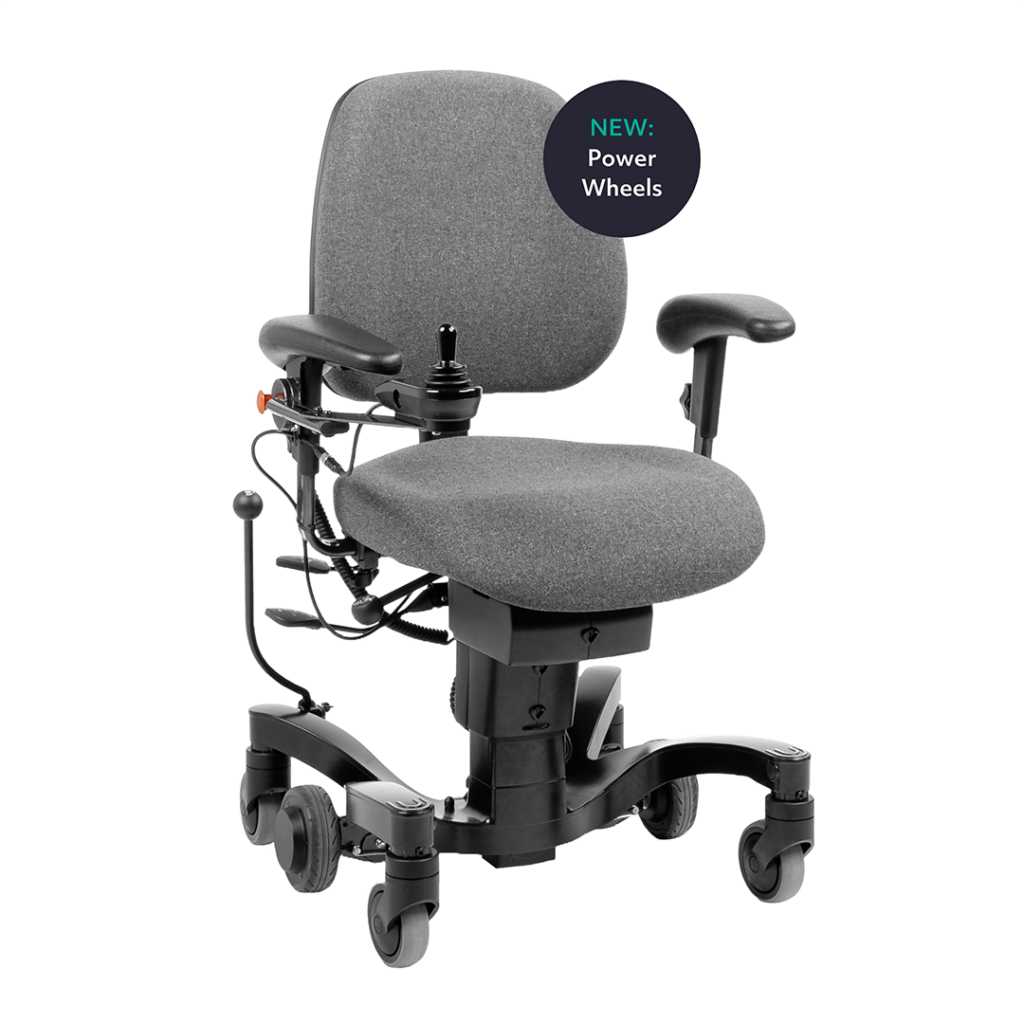
Lento Bariatric Riser Recliner
For users requiring higher weight capacity, we offer a bariatric version of the Lento riser recliner.
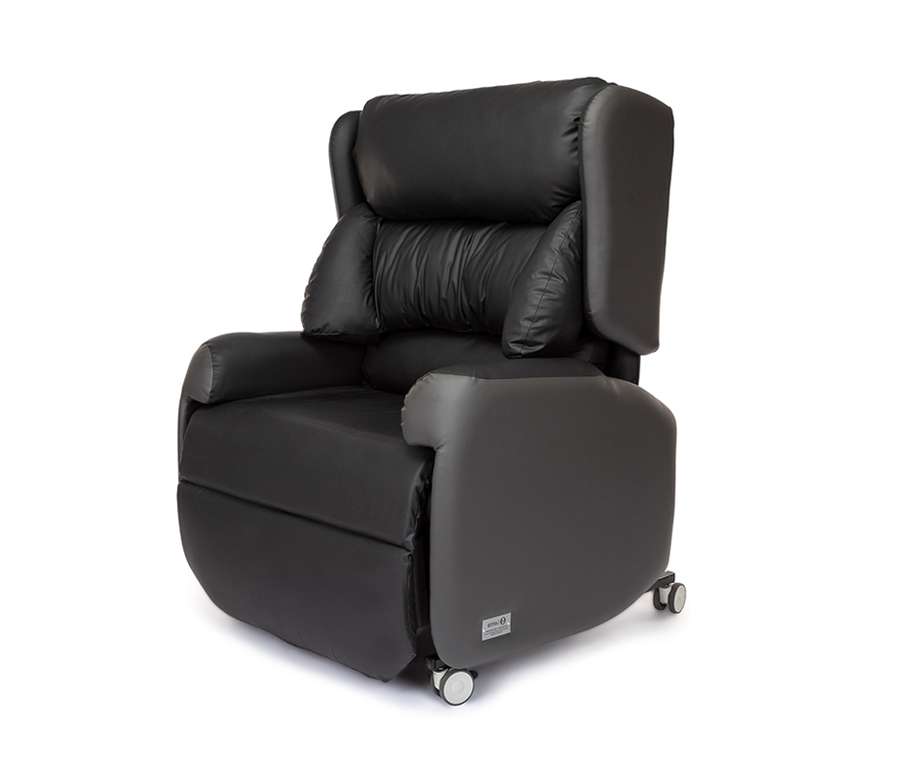
Key Features:
- It supports up to 40 or even 50 stone (depending on model), with postural and pressure care cushion options.
- Movement capabilities include rise, recline, tilt, and independently adjustable back and leg sections.
- This option ensures that users with heavier body weight can have tailored, supportive seating that mitigates neck strain and promotes comfort.
Conclusion
For people living with Chiari malformation, the right seating can significantly reduce daily discomfort and help manage symptoms like headaches, neck pain, and muscle weakness.
Whether you need specialist healthcare seating, ergonomic office chairs, or a riser recliner chair, the key is to prioritise neck support, spinal alignment, adjustability, and posture control.
We offer a wide range of highly adjustable seating solutions that can be tailored to individuals with Chiari malformation, helping ensure comfort, stability, and improved quality of life.
FAQs
Q: What type of chair is best for Chiari malformation?
A: A chair with strong neck support, lumbar shaping, and adjustable positioning is best. Tilt-in-space, zero-gravity, and reclining features can help reduce strain.
Q: Is slouching harmful for people with Chiari?
A: Yes, slouching increases neck flexion, often worsening headaches and dizziness.
Q: Can poor seating make Chiari symptoms worse?
A: Yes, unsupported posture can intensify headaches, neck pain, muscle fatigue, and dizziness. Proper seating is an important part of daily symptom management.



